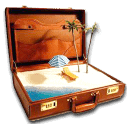
If you have been to Panama before, please share your experiences, ideas and feedback (Hotel, Excursions, General Feeling,…) in the comments section below, by doing so you will help fellow travellers to plan their next trip

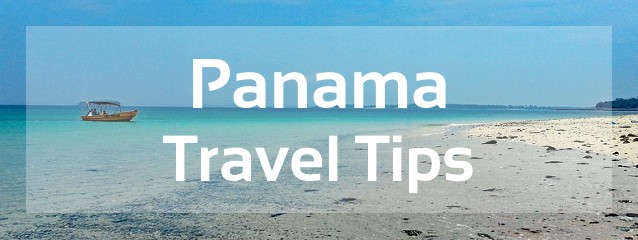
When you hear about Panama, most people will think of the Panama Canal, and will simply know the name of this little central American country. However, Panama has much more to offer and will please travelers from around the world as it’s tourism industry is growing.
Indeed, while the canal is very important to the country as per being a major revenue generator, the tourism industry is expanding and thus, becomes very important. One of the main draw for travelers in Panama could be as simple as the idea of discovering both the Caribbean and the Pacific coasts. Indeed, in Panama, you can start your day having breakfast on a Caribbean beach watching the sunrise, then enjoy the day sightseeing, and sip cocktails as you watch the sunset on the Pacific Ocean.
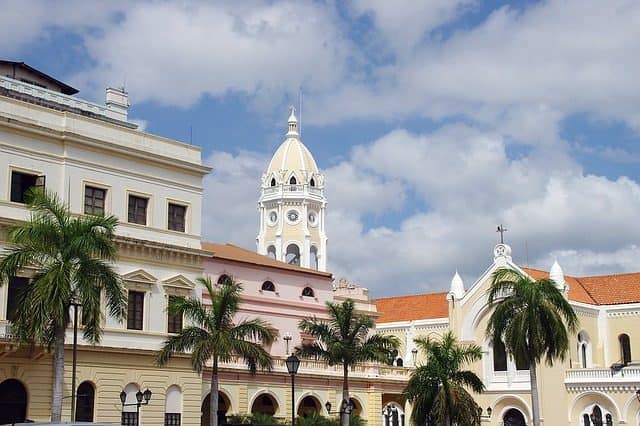
The mountains offer hikers and bird watchers many opportunities. Also, coffee lovers can visit plantations, and enjoy the process of creating coffee. Plus, surfers and scuba divers love the coastline and offshore islands, with each coast offering different attractions. Great beaches and isolate local tribes with their culture still intact. Panama should not be overlooked as a great tourist destination.
In this page you will find practical information to plan a scuba diving trip to Panama:
Table of contents
Where to stay?
There are a number of different destinations within Panama that deserve your consideration. Here are some of the most popular:
- Panama City: The capital and number one destination in Panama. It is a city with a deep history and a blend of the traditional and the modern. Entrance to the Panama Canal on the Gulf of Panama, Pacific coast.
- Colon: The Caribbean Sea side of the Panama Canal. Just 80 km from Panama City. Know for its scuba diving and snorkeling as well as many other activities.
- David is Panama’s third largest city. Located on a beautiful coastal plain near the border with Costa Rica. While a wonderful destination itself, it is also the kickoff point for adventure tours.
- Bocas del Toro archipelago, Reached from David, offers remote island vacations.
- Boquete and Volcan in the mountains about an hour from David
- San Blas islands If you are looking for a true step back in time this is it. Tourism here is low impact. Life on the islands is mostly like it was 5 centuries ago.
Activities and excursions in Panama
Panama is a small nation and very narrow at points. However, it packs a wide range of different activities for the visitor.
- The crystal clear water along the coastline and the offshore islands call to surfers, snorkelers and scuba divers, and of course beach lovers.
- Panama Canal is a man-made marvel that really must be experienced to appreciate it.
- The mountains draw wildlife lovers and those who enjoy hiking
- Culture is still alive here. You will find local customs that have been untouched by the modern world and reminders of the early Spanish settlers.
- Modern museums show both the early times and the current.
Best time to visit Panama
Panama is located just a few degrees north of the equator and is a tropical land. Given that Panama is a relatively small country, the question of when is the best time to go can be a bit difficult.
A mountain range runs through the spine of the country. The land to the east is influenced by the warm Caribbean Sea. While the west is influenced by the colder Pacific Ocean, which itself is influenced by ocean currents coming from the south. Panama has only two seasons, dry and wet. The dry summer season starts in December and goes to the end of March. The wet, or green, season is from April to December.
The Caribbean coast gets about twice the amount of rain as the Pacific coast and during the wet season, it will rain every day. Still, there are on average 340 days of sunshine each year.
Moreover, for international tourist, November may be the month you want to avoid. The rain is the hardest during this month. It is also the peak month for local tourism. There are five national holidays and an additional traditional holiday in November.
Health and Safety
Panama has a growing Medical Tourism industry so it is clear that there is high-quality medical care available. However, that does not mean that high-quality medical care is available everywhere and to everyone. There are three levels of medical care in the country: the Ministry of Health, the Social Security System, and private medical care.
First, the Ministry of health mostly cares for the poor, and those living in remote areas. Secondly, the social security system is caring for workers, providing medical and retirement benefits. Also, it’s this part of the health care system that runs public hospitals and clinics. By western standards, the fees related to health care are very low.
Lastly, the private medical system is found in the major cities and cares for those who can pay for it. Of course, these facilities are mostly very good by international standards. Plus, the fees for such cares are higher, but as the medical tourism can attest, it is less than in most occidental countries. The majority of the doctors have training in the US or Cuba, so qualifications are not an issue.
Basically, what you need to know when traveling to Panama is that waits are often very long in the public hospitals. Thus, in emergencies situations, a private hospital is a better choice. Don’t forget a good medical insurance, we talk about it below!
The governments of the United States, Canada, and the United Kingdom have similar warnings and travel advisories about travel to Panama. They state that visitors should exercise normal precautions within the cities. They also note that there are some high crime areas within the cities to avoid.
We strongly advise that you check your government’s competent authority website to know what regions are at risk and why, when planning any travel worldwide. Panama is a country that sees gang activity, mostly related to drug trafficking, in some areas. For example, the Mosquito Coast and the Darien region on the Colombian border might be better to avoid.
If you are planning an upcoming dive trip or travelling to Panama, it is a really good idea to invest in travel insurance for scuba diving, because you never know what could happen and when you might need it (because accidents do happen!). I recommend this diving insurance as they offer worldwide coverage and focus on providing scuba divers a quality insurance and medical assistance service.
Where is Panama located in the world?
Panama is located on the Isthmus of Panama, also historically known as the Isthmus of Darien. The isthmus has the Caribbean Sea on the east coast and the Pacific Ocean on the west coast. The Panama Canal was built across the isthmus creating a route that bypassed traveling around South America. Panama is considered a part of Central America. Scientifically, Panama is located in North America with the mountain range on its southern border being the segregation between North and South America.

Panama CC BY-SA 2.5, wiki
How to get to Panama?
There are about 40 airports in Panama of which seven are considered international airports. More specifically, three airports are located in and around Panama City:
- Aeropuerto Internacional Panama Pacifico (BLB) is a very small airport located just 20 minutes outside of Panama City with a limited number of flights.
- Albrook “Marcos A. Gelabert” International Airport (PAC) is just outside the city center, on what used to be the Albrook Air Force Base (US). This is the country’s major domestic airport and it has a number of international regional flights.
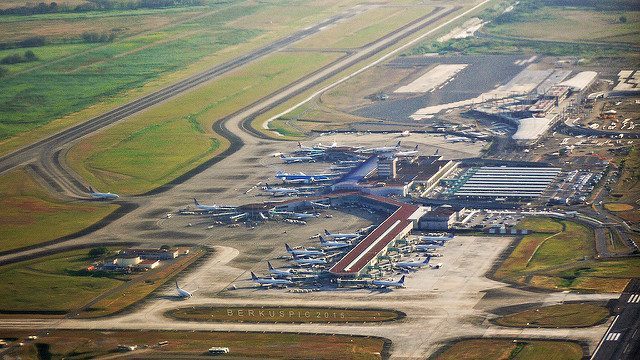
Tocumen International Airport Panama, Photograph by Bernal Saborio
- Tocumen International Airport Panama (PTY) is Panama’s primary international airport. The airport has 25 international airlines flying into it. Many of the flights are code shared with Copa airlines, which is Panama’s National carrier. Tourist connecting to a domestic flight will often need to change airports.
- Enrique Adolfo Jiménez Airport (ONX) serves Colon
- David “Enrique Malek” International Airport (DAV) serves David.
Land crossings into Panama are possible, however, air travel is the most common method of entry. Cruise ships also call on different ports in Panama, and, of course, transverse the Panama Canal.
Do I need a visa for Panama?
If you wish to visit Panama, you will need to determine which of the four classifications you fall under. These classifications are: No Visa Required, Visa Waiver Program, Authorized Visa and Stamped Visa.
All visitors must have passports valid for at least three months beyond the projected stay, You must also show proof of economic solvency for a minimum of US $500.00 upon entry and show proof of onward transportation.
Nationals from a number of countries do not require a visa, click here for the complete list of countries. You will be allowed to enter Panama for a period of 5 months, with a 1 month extension allowed.
Visa Waiver Program: If you are not a national of one of the countries with visa exemptions, but are a holder of a multiple re-entry visa for the Unites States, Canada or the UK, you may be eligible for a visa waiver. To be eligible, you must have used the visa at least once and there is at least one year remaining on the visa. Nationals holding a US permanent residence card do not need the multiple entry visa, the Green card will be accepted.
Authorized Visa: Nationals which are not eligible to the visa waiver program and come from a country on this list need an Authorized Visa. This visa required in depth documentation and may take up to 60 days for review
Stamped Visa: Nationals from the counties below also require a visa unless they qualify under the visa waiver program. Just like the Authorized visa, in depth documentations will be required. However, the process is not as in depth and a visa is issued in a much shorter time.
- Cameroon
- Central African Republic
- Cuba
- Dominican Republic
- Ghana
- Malawi
- Philippines
- People’s Republic of China
- Republic of the Congo
- Swaziland
- Togo
- Venezuela
- Zimbabwe
All this information can be found on the Embassy of Panama’s site – the competent and relevant authority for all visa and immigration matter.
As with anything involved with crossing borders, the requirements are controlled by the country you wish to visit and they do change requirements. It is best to verify the information with the nearest Panama embassy.
Getting Around
A combination of good highways, rail system, and airports make getting between the different cities fairly easy. In the areas that tourist generally visit, the infrastructure is well developed. Also, for shorter distances, the trains or buses will get you there. Longer distance can still use these, however, flying may be a better option. Plus, rental cars are available in all the major cities if you wish to drive yourself around.
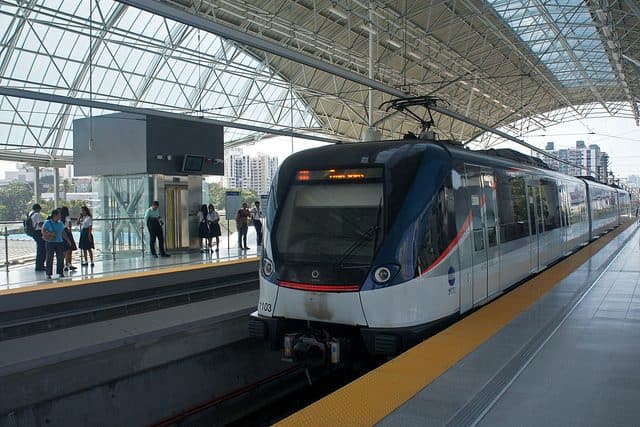
Panama City Metro photograph by mariordo59
Moreover, Panama City has an integrated Metro and bus system. You can buy a single metro card and use it on both the Metro and the Bus. You swipe the card getting on-board, transfers are free going in the same direction, and for up to 2 and a half hours.
Albrook Bus Terminal is located at the Albrook Mall just a few minutes from the domestic airport. All long-distance buses coming into or leaving Panama city are found here. To go to the loading platforms you will need to pay a small fee. You can buy a RapidPass card at the bus station in many shops. It can also be used for the Metro and bus system.
Panama is an unusual destination that offers the visitors many choices. Scuba diving and mountain activities, a lively night life and cultural experiences. It is a great place to explore.
Panama Photos
Scuba diving
You will find all information about sea life, best time to visit, top dive spots, etc. in our review: Panama Diving
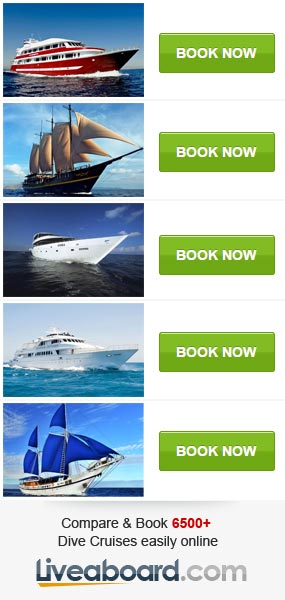
Diving Reviews for this region
Panama
Dive the Pacific Ocean, the Caribbean Sea and visit a train underwater at an inland lake all in one day.
 Destinations
Destinations




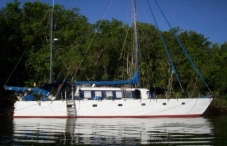
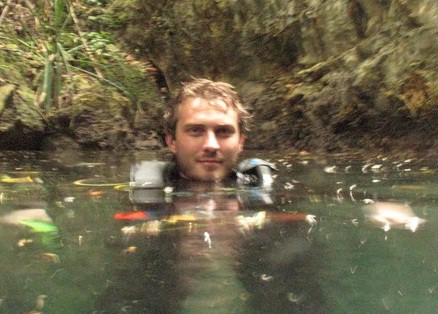




Your Travel Feedbacks
No Travel Feedback yet on this page, your thoughts are welcome!
Have you been travelling or scuba diving here? Rate it!(1 votes, 4.00/5)